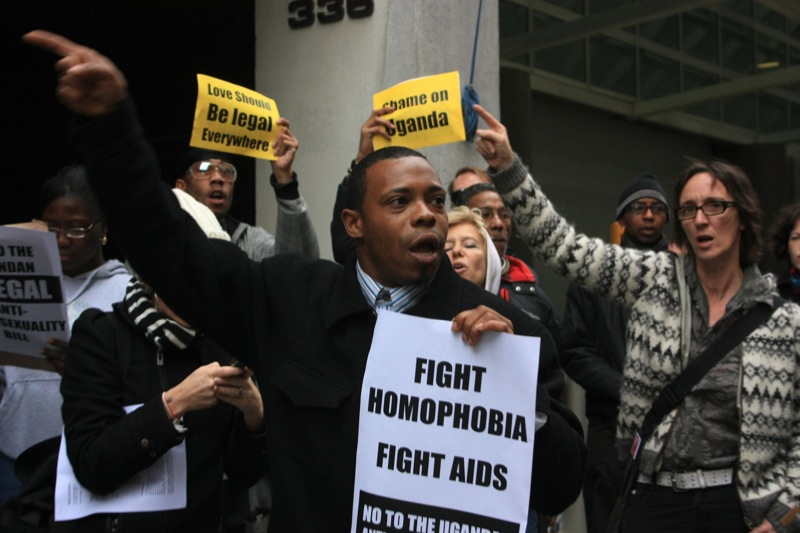In 1981, a little-known autoimmune syndrome appeared in the United States. By August of that year, the media reported over 100 people had died, with over 90 percent of the victims gay men in the prime of their life. By 1987, that number had spiked to nearly 17,000 and the virus had a name: AIDS. No one knew what caused it, how it was transmitted or how it should be treated.
The federal government refused to act and the FDA delayed drug research. The pharmaceutical industry attempted to cash in on the crisis by charging exorbitant prices for drugs. Hate crimes against the LGBTQ community spiked. And the mortality rate continued to rise. To counter governmental bureaucratic indifference and the hostile environment, the gay community mobilized. They founded a grassroots movement called the AIDS Coalition to Unleash Power — or ACT UP — a name deliberately chosen to connote direct action.
Over the ensuing decade, faced with this deadly plague killing gay men across the U.S., ACT UP utilized coordinated protests and campaigns to galvanize action in order to save lives under the seminal slogan “Silence=death.”

CC license photo by Elvert Barnes via Wikimedia Commons
The slogan — created by a group of NYC artists and used by ACT UP with the creators’ permission — became a rallying cry for activists, was worn on t-shirts and buttons as a community identifier, and inspired “die-in” actions to spur the government to pay attention to the ever growing crisis. These consistent and ceaseless protest actions set the stage for deeper, more systemic political pressure and community-led solutions building. They called this innovative impact model the “inside/outside” strategy.
They mobilized ACT UP members to stand in physical protest at any given moment and put their bodies in line to stand outside institutions that were the current target. They were able to mobilize with enough force, leveraging media at the right moment to garner as much attention as possible, forcing those inside the institutions to pay attention. At the same time, they were cultivating a professional force of researchers, both scientific and policy experts, who were able to move to the inside of institutions, and innovate and shift policy from within.

CC image courtesy of riekhavoc on Wikipedia
Applying this strategy, ACT UP forced the FDA to approve new drugs, prevailed upon big pharm to lower the price of the essential drug AZT, and made AIDS a crucial issue in the 1992 presidential election campaign. ACT UP activists empowered themselves by learning how to talk to the media, and how to organize effective mass demonstrations. Their volunteer scientists dove deeply into the medical research, attending conferences and educating themselves, publishing papers that moved the discourse forward. In 1996 — when approximately 8 million people had succumbed to AIDS, and the disease came to be known as a plague, ACT UP started the ACT UP Treatment and Data Committee (later the Treatment Action Group (TAG)) to collaborate with researchers, resulting in the release a cocktail of drugs that stopped AIDS from developing in people who were infected with the HIV virus, and a shift in the way the FDA conducted development and trials. Medical advances keeping people alive today are based solely on ACT UPs advocacy.
The original movement — many members of whom eventually fanned out into other lines of impact work — has more recently come under scrutiny for being led by and more attentive to white cis men as opposed to being fully intersectional. The lessons learned from the movement, however, are still applied today. ACT UP innovated the playbook for activism in a world where media attention is at a premium. Demonstrators marched through the International AIDS conference when it was hosted in Washington D.C. in 2012, harkening back to when ACT UP stormed the National Institutes of Health to display a banner with their slogan.
“All of the civil disobedience training is being done by the same exact people who did them at ACT UP,” said Avram Finkelstein, an artist and former ACT UP member. “So here is this perfect cross-section of this moment. Here is an intergenerational activist organization. And its meetings are in the community center a spitting distance from where the original ACT UP meetings took place.”
ACT UP’s work has extended throughout the decades, from its origins in the 1980s spurring global action on HIV / AIDS to its more recent resistance to U.S. President Donald Trump. The Rise and Resist movement staged a “cough-in” at Trump-owned restaurants by loudly coughing during brunch and holding up signs reading “Trumpcare is making us sick.” The direct protests that are a signature tactic for ACT UP influence groups today. Finkelstein said one of the group’s major lessons is that there is power in working in small groups. He cites Pussy Riot as an example of how a few people create impact – a notion that is evident in the organization of U.S. movements today like Black Lives Matter and Standing Rock.
Learn more: www.actupny.org
